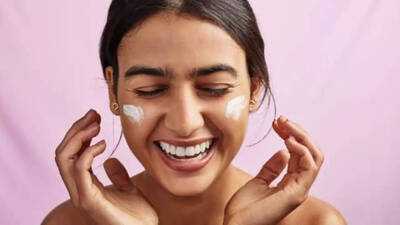Hydrating vs moisturising: What's the difference and which one does your skin really need

Hydrating and moisturising are often used interchangeably, but they address different skin concerns. Hydration increases the water content in the skin using humectants like hyaluronic acid, while moisturising locks that water in with ingredients like oils and occlusives. Understanding the difference is essential for choosing products that truly benefit your skin. Whether your skin is dry, dehydrated, oily, or sensitive, targeting the right issue can improve texture, reduce irritation, and restore balance. Backed by dermatologists and clinical research, this guide helps you decode your skin’s needs and build a routine that works—from the inside out.
The Science: Hydration adds water, moisturisation seals it in
Hydration refers to increasing the water content within the skin. Hydrators contain humectants like hyaluronic acid, glycerin, panthenol, and urea, which draw water from the environment or deeper layers of the skin into the outermost layer, the epidermis. According to the
American Academy of Dermatology Association (AADA) and research published in Dermatologic Therapy, humectants are essential for improving skin hydration , especially in dehydrated skin types.
Moisturisers, on the other hand, help to lock in that water using occlusives (like petrolatum, beeswax) and emollients (such as ceramides and fatty acids). These create a barrier over the skin to prevent transepidermal water loss (TEWL). As explained by cosmetic chemist Perry Romanowski, moisturisers are typically oil-based, while hydrators are water-attracting—both playing different but complementary roles. “Moisturisers form a protective seal that prevents water from escaping, while hydrators absorb water and hold it on the skin,”—
Perry Romanowski
, The Beauty Brains.
How to know what your skin really needs
Dry skin
Dry skin lacks oil and struggles to retain moisture. You’ll benefit most from rich, occlusive moisturisers. Look for:
- Petrolatum, shea butter, plant oils (like coconut or jojoba)
- Emollients such as ceramides or fatty alcohols
A 2017 review in
The Journal of Clinical and Aesthetic Dermatology suggests that occlusives are most effective for very dry or barrier-compromised skin.
Dehydrated skin
Dehydrated skin lacks water, and it can feel tight or look dull—even if it’s oily. You need a hydrating serum followed by a light moisturiser. Best ingredients include:
- Hyaluronic acid
- Aloe vera, glycerin, honey
Hyaluronic acid is well-documented in clinical trials to hold up to 1,000 times its weight in water, making it a hydration powerhouse.
Oily or acne-prone skin
Oily skin can also be dehydrated. When that happens, the skin may overcompensate by producing more oil, worsening breakouts. Dermatologists recommend using
- Water-based, non-comedogenic hydrators and gel moisturisers
- Lightweight ingredients like niacinamide or squalane
According to the AADA, using oil-free, non-acnegenic products is critical in maintaining balance without clogging pores.
Why water alone isn’t enough to hydrate skin
Simply rinsing your face or splashing on water doesn’t hydrate — it may actually dry you out. As water evaporates, it pulls away natural oils, worsening dryness. The AADA warns that frequent cleansing without moisturising can lead to tight, flaky skin. Instead, always apply a humectant followed by a moisturiser after washing to trap hydration in the skin barrier.
Many products do both; it’s the ingredients that matter
Most modern moisturisers contain a blend of humectants, occlusives, and emollients, meaning they can hydrate and moisturise simultaneously. The form—cream, gel, balm—affects texture and experience more than function. What's key is reading the ingredients list.
According to the study, their uses typically include:
- Humectants: For thick, scaly, dehydrated skin
- Emollients: For improving skin texture and smoothness
- Occlusives: For sealing in moisture and preventing flare-ups like eczema
So, while product labels might use “hydrator” or “moisturiser” loosely, understanding what's inside matters more than the branding.
Support skin hydration from within
Topical products do help, but internal hydration is essential. According to the AADA and nutritional studies:
- Aim to drink at least half your body weight (in pounds) in ounces of water daily
- Eat water-rich foods like cucumbers, strawberries, watermelon, and oranges
- Limit hot showers and opt for gentle cleansers and fragrance-free products
- Always apply moisturiser immediately after washing to prevent moisture loss
Also, the AADA recommends regular sun protection, stress management, and avoiding smoking, as these affect your skin’s ability to retain moisture.
Whether your skin is dry, dehydrated, oily, or sensitive, there’s no one-size-fits-all. Instead, tailor your routine based on what your skin lacks, water, oil, or both. By choosing the right balance of hydrating and moisturising ingredients , and staying hydrated from the inside, you’ll help your skin function at its best—smooth, healthy, and glowing.
Also Read:
Dandruff vs Dry Scalp: What causes them, and how to choose the right treatment
 Hydrating and moisturising are often used interchangeably, but they address different skin concerns. Hydration increases the water content in the skin using humectants like hyaluronic acid, while moisturising locks that water in with ingredients like oils and occlusives. Understanding the difference is essential for choosing products that truly benefit your skin. Whether your skin is dry, dehydrated, oily, or sensitive, targeting the right issue can improve texture, reduce irritation, and restore balance. Backed by dermatologists and clinical research, this guide helps you decode your skin’s needs and build a routine that works—from the inside out.
Hydrating and moisturising are often used interchangeably, but they address different skin concerns. Hydration increases the water content in the skin using humectants like hyaluronic acid, while moisturising locks that water in with ingredients like oils and occlusives. Understanding the difference is essential for choosing products that truly benefit your skin. Whether your skin is dry, dehydrated, oily, or sensitive, targeting the right issue can improve texture, reduce irritation, and restore balance. Backed by dermatologists and clinical research, this guide helps you decode your skin’s needs and build a routine that works—from the inside out.